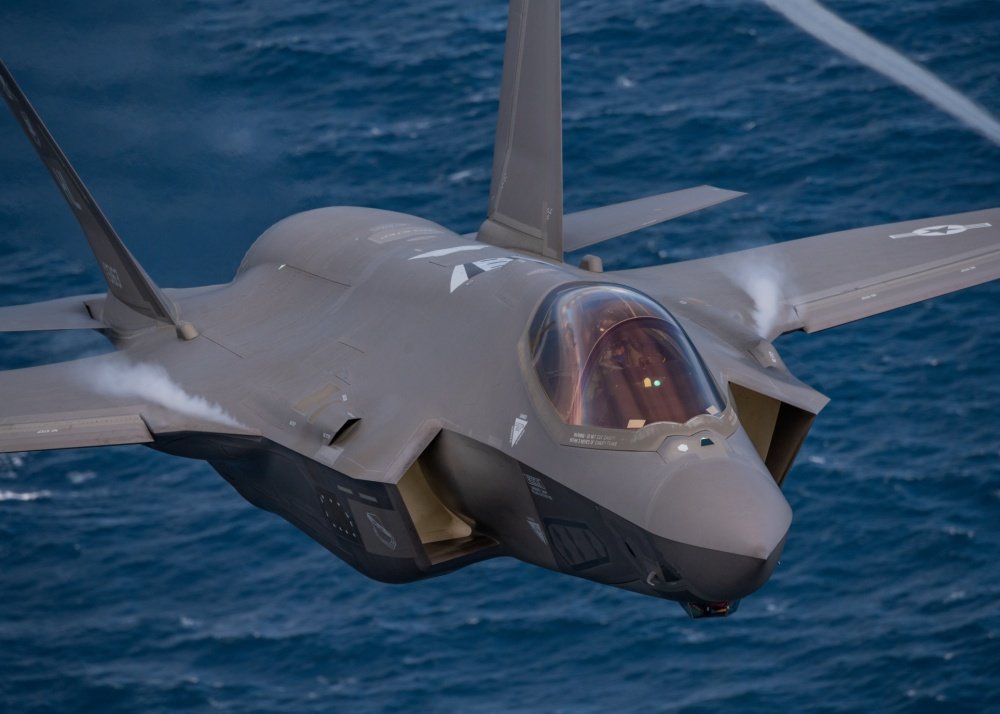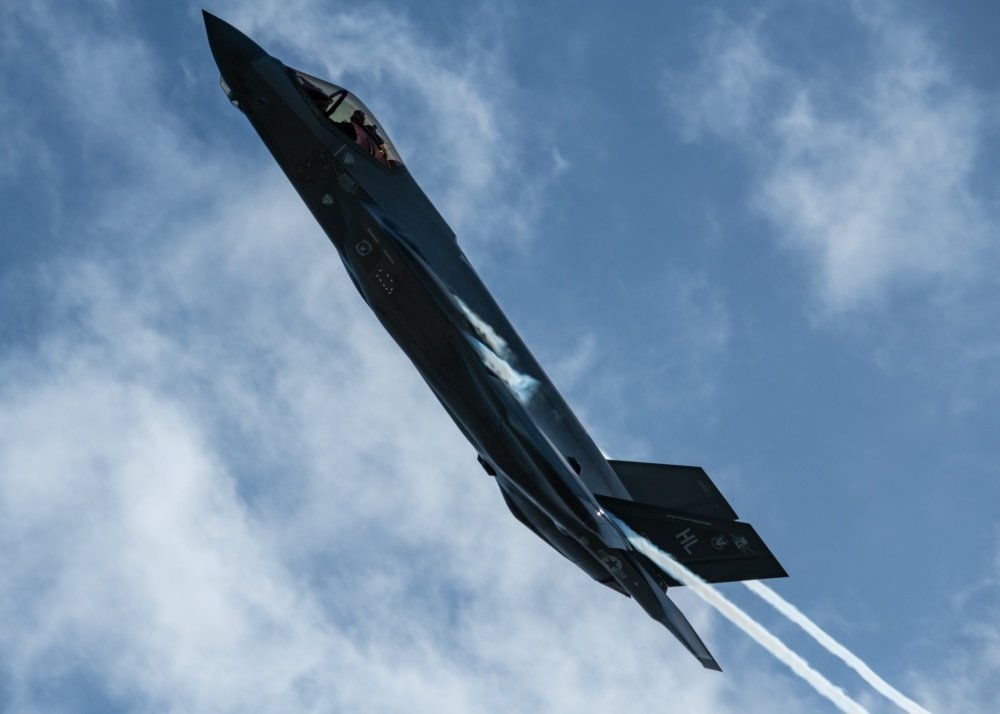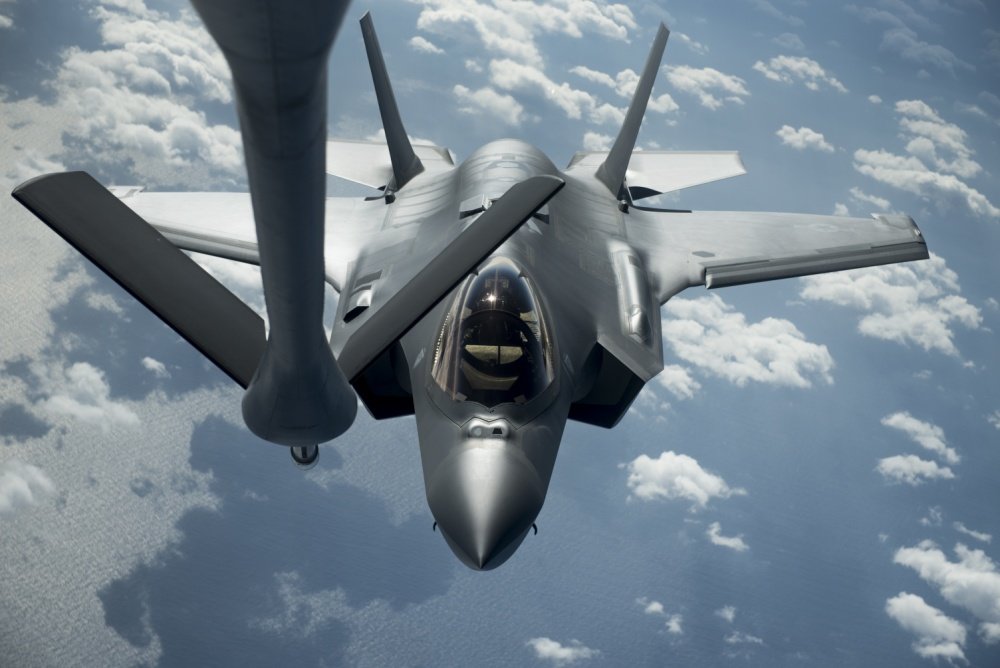Air Force’s 1st Overseas F-35A Squadron Will Be the UK-Based ‘Valkyries’

US Air Force Capt. Kristin “Beo” Wolfe, F-35A Lightning II Demonstration Team commander and pilot, flies off the coast of Fort Lauderdale Nov. 20, 2020. US Air Force photo by Capt. Kip Sumner, courtesy of DVIDS.
The F-35A Lightning II is the Air Force’s newest, fifth-generation stealth fighter. But there’s nothing stealth about the deterrent message to Russia intended by the permanent basing of an F-35A squadron on British soil.
Set to be the first US Air Force overseas-based F-35A squadron, the 495th Fighter Squadron will arrive later this year at the 48th Fighter Wing at Royal Air Force Lakenheath in eastern England. While US defense officials don’t often mention Russia by name when discussing the big-picture significance of military activities and movements, the lasting presence of American F-35s in Europe will send a clear message to Moscow.
“We’re getting the F-35s here largely as a deterrent to our aggressors,” Air Force Maj. Keavy Rake, a 48th Fighter Wing spokesperson, told Coffee or Die Magazine.
Moreover, the newly chosen name for the squadron — the “Valkyries” — is meant to send a message to the rank and file of America’s armed forces. In Norse mythology, Valkyries are supernatural female figures who decide the fate of warriors in battle. The selection of the Valkyries’ name for America’s first overseas-based F-35A squadron is a nod to America’s female armed services members. It’s also well suited to the F-35A’s lethality and stealth.
“‘Valkyries’ epitomizes the force’s move toward more inclusivity and equally represents the fifth-generation stealth fighter’s air superiority,” Lt. Col. Ian McLaughlin, the incoming commander of the 495th Fighter Squadron, said in a release.

The “Valkyries” name was chosen for the F-35A squadron after the Air Force solicited public input. According to an Air Force release, the area around RAF Lakenheath is rich with Viking and Norse history. “Like the Valkyries themselves, we’ll be vital to determining the fate of our adversaries in the battlespace,” McLaughlin said.
The US military has been adapting its military footprint in Europe chiefly to match the contemporary “near-peer” threat posed by Russia. The permanent basing of fifth-generation F-35A fighters in Europe will significantly upgrade the combat lethality of America’s long-term presence on the continent — not only to defend Europe and the NATO alliance but to expand America’s military sway over the Arctic, as well, a region that has increasingly become a crossroads of competing interests between the US, Russia, and China.
“Basing F-35s at RAF Lakenheath will be a game changer as it will allow us to further advance interoperability with our European teammates, and is a visible demonstration that we and all of NATO will continue to own the skies,” Col. Jason Camilletti, 48th Fighter Wing commander, said in a release.
Read Next:

The US and its NATO allies have increased the scale and frequency of their military exercises on the European continent’s geographic peripheries — particularly in the Baltic Sea and Black Sea regions — where tensions with Russia have simmered since Moscow’s 2014 invasion of Ukraine.
With the “near-peer” threat in mind, Air Force Global Strike Command — the US command in charge of America’s strategic bombers and nuclear-armed intercontinental ballistic missiles — has similarly increased the frequency of its transcontinental bomber task force missions, which are meant to demonstrate the global reach of American air power.
For their part, Europe-based US special operations forces are training to work more closely with conventional units to increase the speed and flexibility by which the joint American force can deploy from bases in Western Europe to defend the rest of the continent.
“The Air Force and joint force are looking at new ways to fight a persistent threat,” said Rake, the 48th Fighter Wing spokesperson.
Read Next:

BRCC and Bad Moon Print Press team up for an exclusive, limited-edition T-shirt design!
BRCC partners with Team Room Design for an exclusive T-shirt release!
Thirty Seconds Out has partnered with BRCC for an exclusive shirt design invoking the God of Winter.
Lucas O'Hara of Grizzly Forge has teamed up with BRCC for a badass, exclusive Shirt Club T-shirt design featuring his most popular knife and tiomahawk.
Coffee or Die sits down with one of the graphic designers behind Black Rifle Coffee's signature look and vibe.
Biden will award the Medal of Honor to a Vietnam War Army helicopter pilot who risked his life to save a reconnaissance team from almost certain death.
Ever wonder how much Jack Mandaville would f*ck sh*t up if he went back in time? The American Revolution didn't even see him coming.
A nearly 200-year-old West Point time capsule that at first appeared to yield little more than dust contains hidden treasure, the US Military Academy said.












